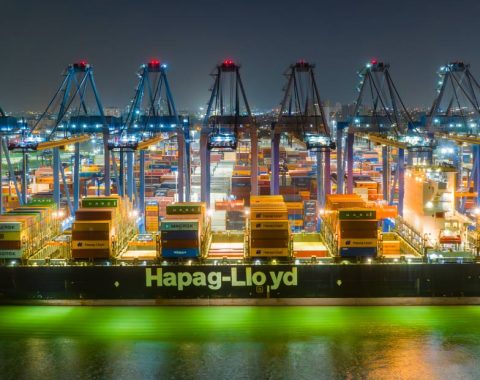Colombia is experiencing a key moment in its foreign trade. In the first months of 2025, non-mining-energy exports, especially agricultural ones, have registered remarkable growth, while Gustavo Petro’s government seeks to diversify its markets and reduce the historical dependence on fossil fuels. Additionally, the application to join the BRICS New Development Bank and closer ties with China are redefining its geopolitical and commercial strategy.
From the iconic Great Wall of China, President Gustavo Petro signed a Memorandum of Understanding on May 12, 2025 for Colombia’s accession to the Belt and Road Initiative (BRI), strengthening bilateral cooperation in priority sectors like infrastructure, technology, and energy transition. This historic milestone reshapes the country’s foreign policy and has already begun positioning geopolitics as a key issue for the upcoming 2026 elections.
Export Growth and Diversification
In March 2025, Colombian exports grew by 12.2% compared to the same month last year, reaching US$4,338.1 million. This increase was primarily driven by the agricultural, food, and beverage sector, which recorded an increase of 50.9%.
- Coffee leads growth: Sales of unroasted coffee doubled (+103.4%) in the first quarter of 2025, even surpassing coal in March (US$532.6 million versus US$231 million).
- Surge in manufacturing and other sectors: Manufactured product exports grew by 6.8%, while non-monetary gold sales drove a 37.3% increase in other categories.
This dynamism reflects the government’s efforts to diversify the export basket, although challenges persist in consolidating this long-term trend.
Coffee Surpasses Coal: A Structural Change?
For the first time since 2020, coffee has displaced coal as one of the main export products. This phenomenon is explained by:
- Increased coffee production: In the first quarter of 2025, the harvest reached 3.78 million bags, 36% more than in 2024.
- Stable international demand: According to the National Federation of Coffee Growers, Colombia remains a reliable supplier in an uncertain global market.
However, coal exports have shown volatility, with a decline in March following a February rebound, confirming the need to reduce dependence on commodities.
Colombia Seeks New Allies: Interest in BRICS
In a context of global trade tensions, Colombia has formalized its application to join the BRICS New Development Bank, a bloc that represents about 40% of world trade.
- Financing opportunities: The government sees this organization as an alternative for infrastructure, education, and development projects.
- Brazilian support: The South American country has extended a formal invitation to Colombia to evaluate its entry into the bloc.
Acting Minister of Commerce, Cielo Rusinque, emphasized that this strategy seeks to reduce dependence on traditional markets and strengthen presence in Asia, Africa, and the Middle East.
China: A Growing Partner, but with Caution
Although Colombia has historically maintained closer trade relations with the U.S. and Europe, interest in China is increasing.
- Infrastructure investments: Colombian priorities (railways, renewable energy, ports) align with Chinese capabilities.
- Growing business interest: Visa applications for the Canton Fair reached record numbers, signaling the attractiveness of the Chinese market.
However, debates persist about the risks of closer ties:
- Concern about U.S. relations: Some sectors fear that stronger ties with China could affect relations with Washington.
- Demystifying the “debt trap”: The Chinese ambassador clarified that their investments don’t generate public debt, as they are made by private companies.
U.S. Remains Key, but with Tensions
The United States remains the main destination for Colombian exports (32.3% in March 2025), especially for coffee and flowers. However, U.S. protectionism has led Colombia to seek alternatives.
- Impact of Trump’s policies: Some analysts point out that the U.S. protectionist turn forced Colombia to explore new markets.
- Global trade wars: Tensions between China and the U.S. influence diversification decisions.
- Internal ideological dispute: The two political groups vying for power in Colombia have clear tendencies. On one side, closer ties with China and BRICS is one of the current progressive government’s flagship policies, and on the other, the conservative opposition, which has had a long and intimate history with the United States. This is turning geopolitics into a potentially decisive issue for the 2026 elections.
Pending Challenges
Despite progress, Colombia faces obstacles in consolidating its export strategy:
- Lack of competitiveness: The country still lags behind others in the region in per capita exports.
- Logistical and bureaucratic barriers: Improvements are needed in customs digitalization, infrastructure, and visa facilitation for investors.
- Public-private coordination: It’s crucial to identify products with high international demand and increase productive capacity.
A Historic Turn Amid the Storm
Colombia is experiencing an unprecedented transition: a small fish that, for the first time in its republican history, is trying to navigate autonomously through the turbulent currents of a trade war between powers. The numbers don’t lie –coffee surpassing coal, the 23% jump in non-traditional exports, the bold move towards BRICS– are undeniable signs that the country is awakening to its geopolitical potential.
This change doesn’t mean that historical dependency has been broken. Economic structures tied to Washington don’t transform in a year. But there’s something new: political will to renegotiate terms of global insertion. While the industrial bourgeoisie debates between the comfort of the old model and Asian opportunities, Colombia demonstrates that, although late, even amid the geoeconomic storm, it’s possible to row towards less dependent waters.
The road will be long –pending reforms in productivity, infrastructure, and commercial diplomacy are monumental– but 2025 will be recorded as the year when Colombia finally started playing its own cards.





